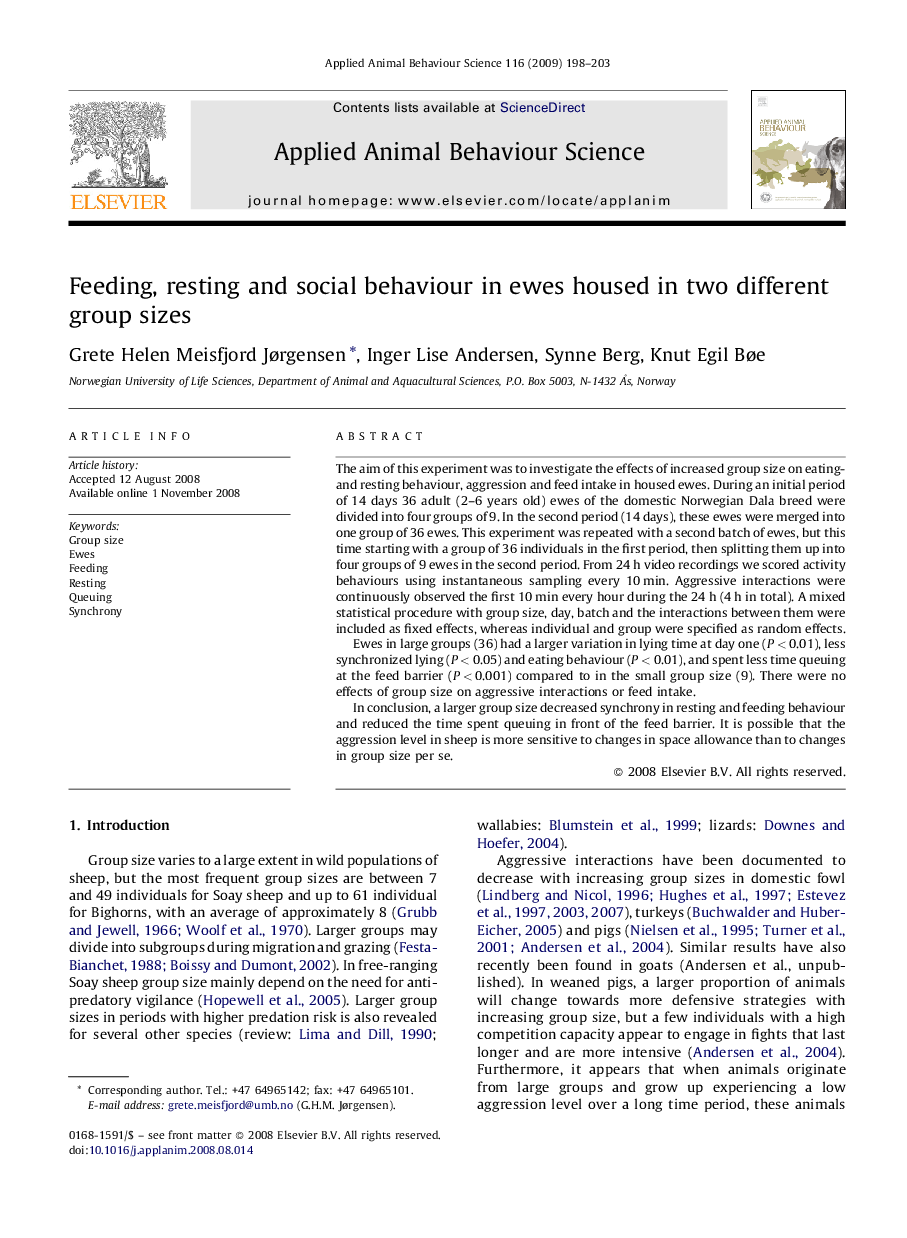| Article ID | Journal | Published Year | Pages | File Type |
|---|---|---|---|---|
| 4523795 | Applied Animal Behaviour Science | 2009 | 6 Pages |
The aim of this experiment was to investigate the effects of increased group size on eating- and resting behaviour, aggression and feed intake in housed ewes. During an initial period of 14 days 36 adult (2–6 years old) ewes of the domestic Norwegian Dala breed were divided into four groups of 9. In the second period (14 days), these ewes were merged into one group of 36 ewes. This experiment was repeated with a second batch of ewes, but this time starting with a group of 36 individuals in the first period, then splitting them up into four groups of 9 ewes in the second period. From 24 h video recordings we scored activity behaviours using instantaneous sampling every 10 min. Aggressive interactions were continuously observed the first 10 min every hour during the 24 h (4 h in total). A mixed statistical procedure with group size, day, batch and the interactions between them were included as fixed effects, whereas individual and group were specified as random effects.Ewes in large groups (36) had a larger variation in lying time at day one (P < 0.01), less synchronized lying (P < 0.05) and eating behaviour (P < 0.01), and spent less time queuing at the feed barrier (P < 0.001) compared to in the small group size (9). There were no effects of group size on aggressive interactions or feed intake.In conclusion, a larger group size decreased synchrony in resting and feeding behaviour and reduced the time spent queuing in front of the feed barrier. It is possible that the aggression level in sheep is more sensitive to changes in space allowance than to changes in group size per se.
